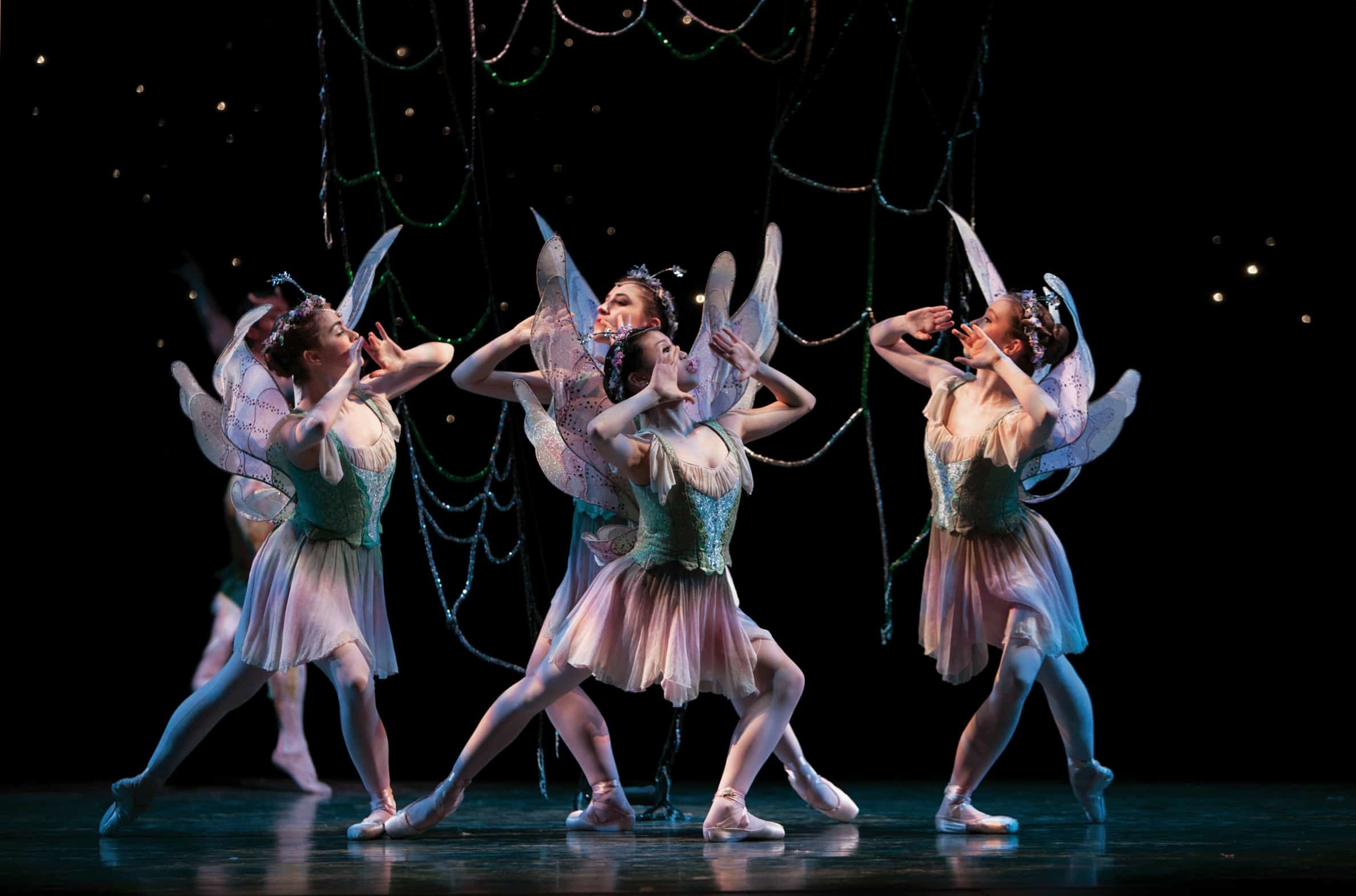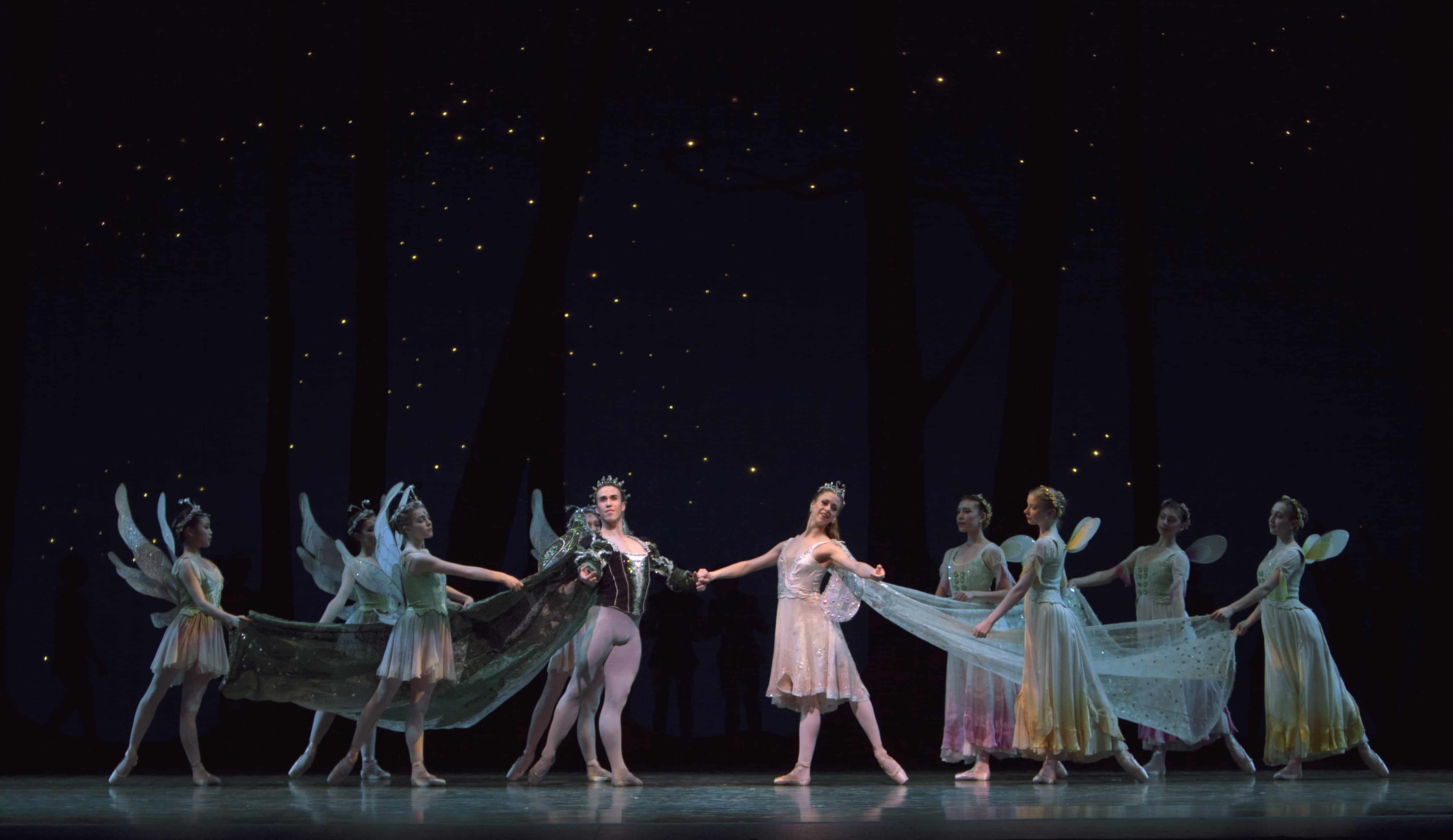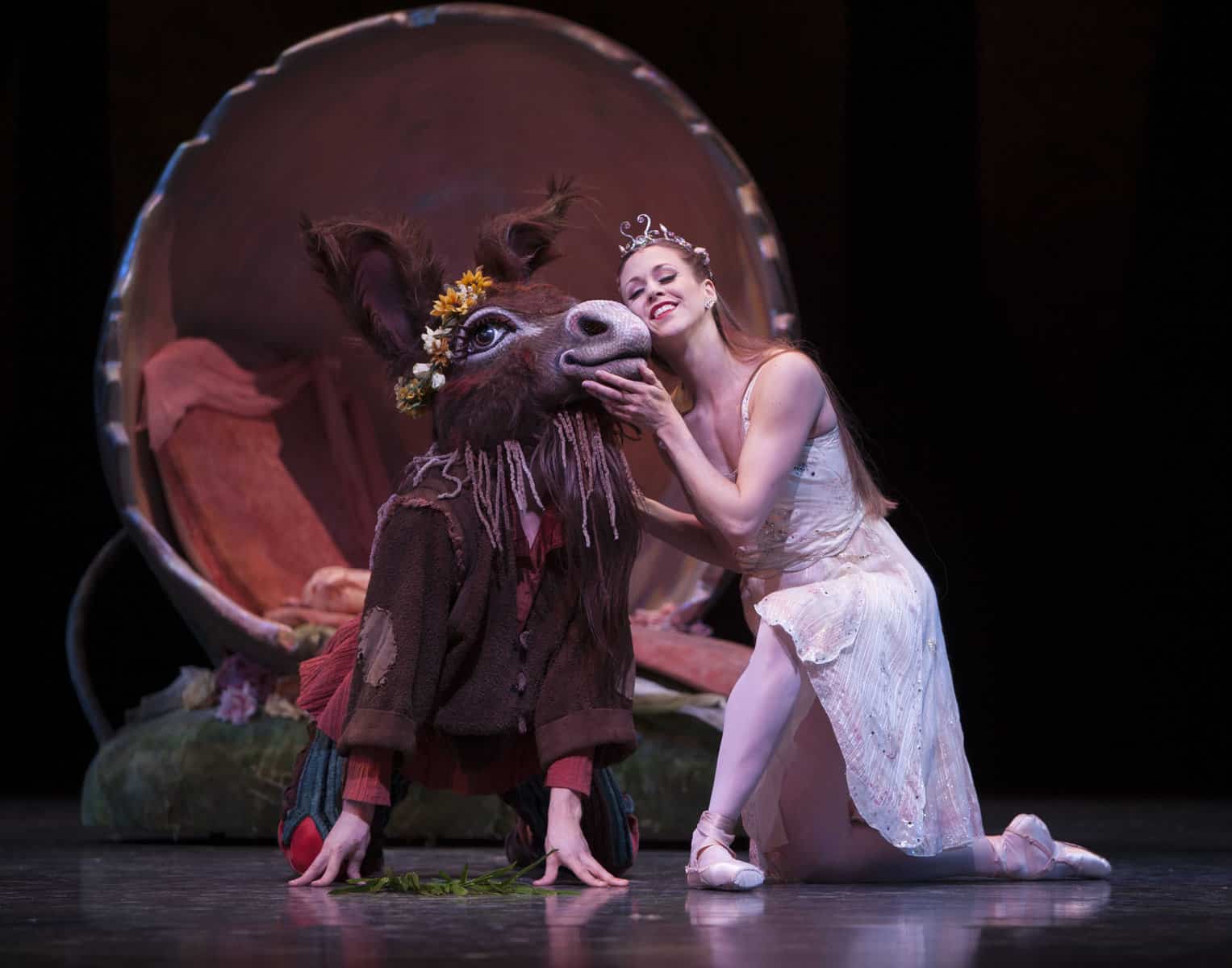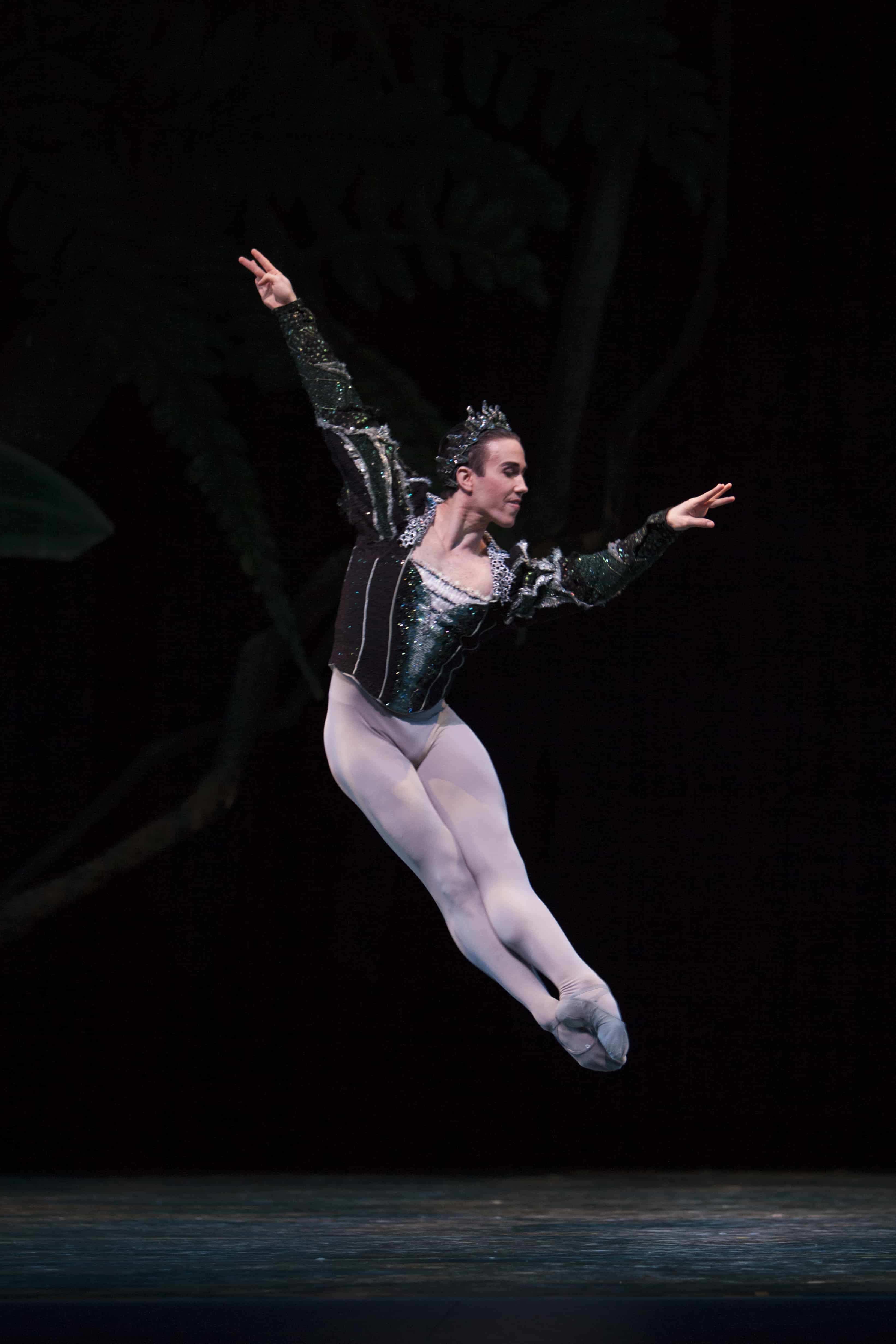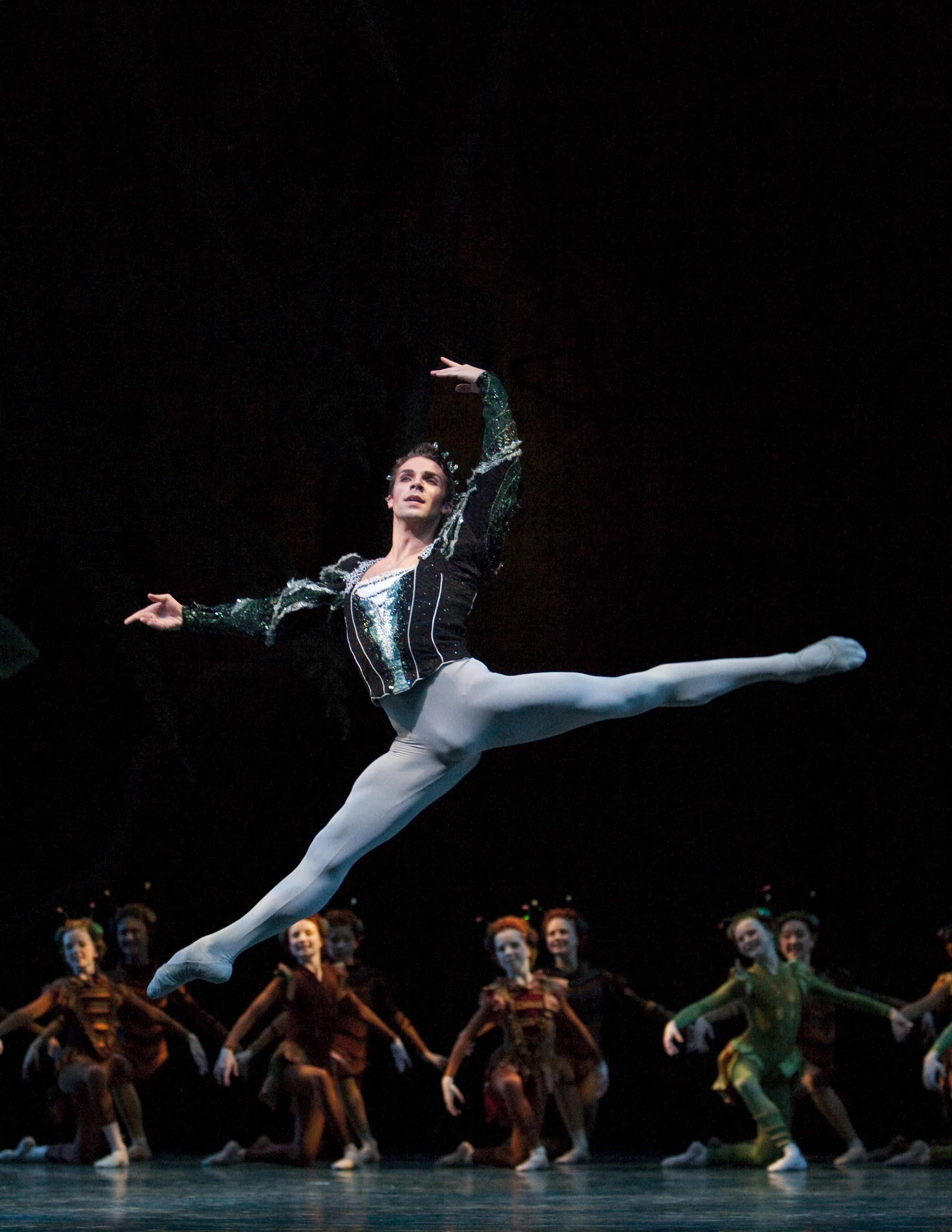A Midsummer Night’s Dream
Music
Felix Mendelssohn
(Overture and incidental music to A Midsummer Night’s Dream, Op. 21 and 61, 1826, 1843; Overtures to Athalie, Op. 74, 1845; and The Fair Melusine, Op. 32, 1833; The First Walpurgis Night, Op. 60; Symphony No. 9 for Strings [first three movements], 1823; Overture to Son and Stranger, Op. 89, 1829
Choreography
George Balanchine © The George Balanchine Trust
Staging
Francia Russell
Scenic and Costume Design
Martin Pakledinaz
Lighting Design
Randall G. Chiarelli
Duration
2 hours
Premiere
January 17, 1962; New York City Ballet
Pacific Northwest Ballet Premiere
May 16, 1985; new production: May 27, 1997
Pacific Northwest Ballet’s 1997 redesign of George Balanchine’s A Midsummer Night’s Dream was made possible by PONCHO, Susan & Jeffrey Brotman, Kreielsheimer Foundation, The Ackerley Group, The Allen Foundation for the Arts, SAFECO, Kayla Skinner, Mr. & Mrs. Roland M. Trafton, and Arlene A. Wright.
Program Notes
George Balanchine created A Midsummer Night’s Dream for New York City Ballet in 1962. The choreographer’s fondness for Shakespeare’s fanciful tale of love’s delusions and mishaps dated from boyhood when he had performed as an elf in a St. Petersburg production of the play. As an adult he still remembered many lines (in Russian) and loved to quote them, especially those enchanting ones of Oberon that begin, “I know a bank where the wild thyme blows, / Where oxlips and the nodding violet grows… “But Balanchine’s desire to bring this favorite theater piece to the ballet stage waited more than twenty years for fulfillment while he searched for music with which to expand Mendelssohn’s original score to suitable length.
Although Balanchine is famous for his rejection of the evening-long story ballet tradition that dominated the 19th century, he was not, in fact, opposed to story ballets per se, only to their excesses and excrescences. In Midsummer, which dance writer Anita Finkel has called “possibly the greatest narrative ballet of all time,” he demonstrated brilliantly that the pace of a story ballet can be fleet rather than ponderous, that mime can be delicate and exquisitely to the point, and that the tale can be told almost entirely through dance.
Still, Balanchine said that “it is really impossible to dance Shakespeare,” and that the primary inspiration for his ballet was Mendelssohn’s lush music. Nevertheless, of all Shakespeare’s plays, this one perhaps lends itself most naturally to dance. Indeed, Shakespeare critic Enid Welsford has described Midsummer as “sound and movement turned to poetry.” Certainly, the airy, delicate voices of the fairy kingdom translate readily into balletic magic, and the frantic comings and goings of the mismatched lovers make for delicious choreographic activity.
Perhaps most inspired is Balanchine’s sustained employment of ballet’s central metaphor of love—the pas de deux—to embody the play’s subtle insights into the many permutations of the love relationship. The cloying embraces of Hermia and Lysander, the distraught pleadings of Helena with Demetrius, the thrashing resistance of Hermia to Demetrius and of Helena to Lysander—all are distortions of the ideal partnership between lovers, traditionally conveyed by the ballerina and premier danseur. This human game of power is also played out in the fairy realm where, tellingly, the disputing spouses Titania and Oberon never dance together but instead perform self-celebratory solos for their admiring retinues. When Titania does condescend to take a partner, it is either the non-descript cavalier, who functions more as prop than peer, or, in the work’s most charming episode, an artless ass. Only in Act II, which is pure dance, do the battles and imbalances, the self-indulgences and self-deceptions give way to a genuine dance partnership. In the magnificent Divertissement pas de deux which crowns the wedding festivities, competition has no place, and restraint, mutuality and trust define the mature ideal of love.
A Midsummer Night’s Dream has been in Pacific Northwest Ballet’s repertory since 1985. In 1997, with the approval of The George Balanchine Trust, PNB commissioned set and costume designer Martin Pakledinaz to re-design the entire production—a “first” for a Balanchine story ballet. Staged by PNB Founding Artistic Director Francia Russell, with every step, movement and gesture as Balanchine intended, this freshly-designed Midsummer, which PNB premiered in Seattle in May 1997, brings the choreographer’s dramatic ideas to life scenically as never before.
PNB has performed its production of Midsummer to great acclaim at the Edinburgh International Festival in August 1998 and at Sadler’s Wells Theater in London in February 1999, where the production was filmed by the BBC and subsequently released on DVD.
Notes by Jeanie Thomas; edited by Doug Fullington, 2007.
Bios
Martin Pakledinaz
Scenic and Costume Designer
Martin Pakledinaz is an award-winning costume designer for stage, television, and film. He won Tony Awards for Thoroughly Modern Millie and the 2000 revival of Kiss Me Kate, which also earned him the Drama Desk Award for Outstanding Costume Design. His extensive Broadway credits include Grease, The Pirate Queen, The Pajama Game, The Trip to Bountiful, Wonderful Town, The Boys From Syracuse, The Diary Of Anne Frank, A Year With Frog And Toad, The Life, Anna Christie, The Father, Golden Child, and the current production of Anything Goes. His off-Broadway work includes Two Gentlemen of Verona, Andrew Lippa’s The Wild Party, Kimberly Akimbo, Give Me Your Answer Do, Juvenalia, The Misanthrope, Kevin Kline’s Hamlet, Twelve Dreams, Waste, and Troilus and Cressida. He has designed for leading regional theaters in the United States and for the Royal Dramatic Theatre of Sweden. His designs for opera include works at the New York Metropolitan Opera and the New York City Opera, as well as opera houses in Seattle, Los Angeles, St. Louis, Sante Fe, Houston, Toronto, Salzburg, Paris, Amsterdam, Brussels, Helsinki, and Gothenburg, among others.
Mr. Pakledinaz’s dance credits include a long collaboration with Mark Morris, and dances for such diverse choreographers as George Balanchine, Eliot Feld, Deborah Hay, Daniel Pelzig, Helgi Tomasson, and Lila York. Since designing the costumes for Kent Stowell’s Cinderella in 1994, he has had an excellent creative relationship with Pacific Northwest Ballet. In 1995, he designed new costumes for Mr. Stowell’s Zirkus Weill. In 1997, with the approval of The George Balanchine Trust, PNB commissioned Mr. Pakledinaz to re-design the entire production of George Balanchine’s A Midsummer Night’s Dream—a “first” for a Balanchine story ballet.

